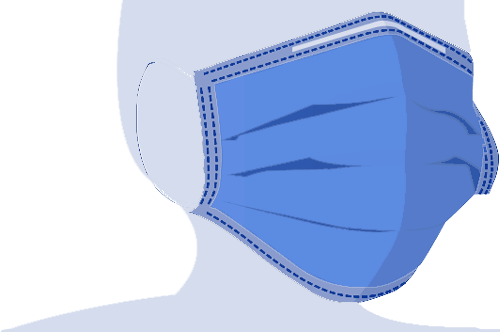
¡Seguimos cuidando tu salud! Recuerda: el uso de cubrebocas es obligatorio durante tu estancia en el hospital; con esto evitamos la propagación de enfermedades respiratorias.

¡Seguimos cuidando tu salud! Recuerda: el uso de cubrebocas es obligatorio durante tu estancia en el hospital; con esto evitamos la propagación de enfermedades respiratorias.
Recientes estadísticas dicen que el 15% de los adultos presentan dolor de cuello, y que se presenta con más frecuencia en mujeres que rebasan los 50 años. Generalmente el dolor de cuello se genera por traumatismo cervical directo derivado de algún choque automovilístico o artritis reumatoide.
Los síntomas se manifiestan en dolor en la parte posterior del cuello que puede irradiarse a la nuca, hombros, tórax, brazos y manos. Puede haber limitación en los movimientos cervicales, y las compresiones pueden causar hormigueo o parálisis parciales.
Tipos de dolores cervicales:
Puede haber dolor cervical no específico sin historia de traumatismo, ni evidencia de lesión y se puede tratarse con analgésicos.
Dolor cervical agudo por compromiso músculo-tendinoso. Frecuentemente producido por alteraciones posturales ó sobre distensión. Puede acompañarse de disminución en la movilidad cervical ó espasmo muscular. Debe usarse collarín y analgésicos.
Herniación del núcleo pulposo del disco intervertebral. Se presenta como dolor que aumenta al estornuda o toser, causando espasmo muscular. Requiere tracción cervical, analgésicos, reposo en cama e inmovilización cervical. En casos progresivos y rebeldes al tratamiento, puede requerirse cirugía.
Enfermedades articulares o artritis degenerativa. Describe una serie de alteraciones que incluye las articulaciones apofisiarias. Frecuentemente se observa adelgazamiento del cartílago articular y degeneración ósea con formación de osteofitos. Cuando causa molestias debe tratarse con analgésicos y antiinflamatorios.
En conclusión, al depositar tu confianza en los terapeutas de Médica Sur, gozarás del beneficio de ser atendido por personal profesional y totalmente capacitado, que es sometido a programas de educación continua, impartida dentro y fuera del hospital.
Además, siempre a la vanguardia, nos apoyamos en tecnología de punta como el tratamiento con ondas de choque, procedimiento que solamente es aplicado en nuestra institución desde hace siete años y que reconocido a nivel nacional e internacional.
Garantizamos la reintegración normal a tu vida personal y laboral después de haberte puesto en las manos de nuestros médicos expertos.
Haz una cita
55 5424 7224Para agendar cita
Lunes a Viernes de 7 a 15 hrs.
Horario para tratamiento
Lunes a viernes de 7 a 20 hrs.

Llámanos o
haz una cita

55 4075 1774
Solo mensajes
*Para realizar cita, acudir con orden médica con diagnóstico prescrita por el médico tratante